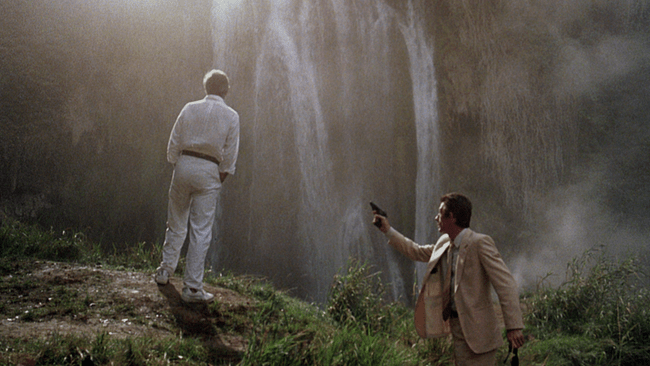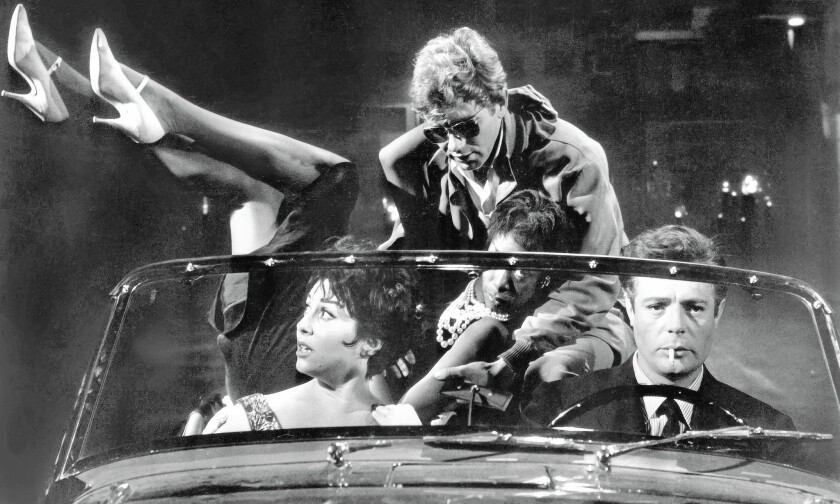By Dennis Hartley
(Originally posted on Digby’s Hullabaloo on December 5, 2020)

Alas, poor Yorick! I knew him, Horatio, a fellow of infinite jest, of most excellent fancy.
— Hamlet, as he ponders the skull of a deceased friend (from Act 1, Scene 5 of Hamlet)
Good or bad, handsome or ugly, rich or poor they are all equal now.
— From the Epilogue title card of Stanley Kubrick’s film adaptation of Barry Lyndon.
Alas. It’s so sad, their grandma died. Oh dear, he was only 60…what a pity. Rich or poor, revered or despised-Fate befalls all. What a tragedy. Nobody can escape.
— ICU nurse in 76 Days, as she disinfects personal effects of deceased COVID patients.
You know what “they” say about death and taxes. Well…what Christopher Bullock said:
’Tis impossible to be sure of anything but Death and Taxes.
Speaking for myself (although I suspect I speak for many here), one thing I surely did not see coming was the possibility of death by plague, especially as I careen toward my 65th birthday in the 2nd decade of the 21st Century. With apologies to Douglas Adams, the mere thought hadn’t even begun to speculate about the merest possibility of crossing my mind.
Yet here we are, 10 months into a global pandemic. “Wallet, keys, mask” is now my mantra before leaving the house. It’s been some time since I reached the final stage of the Kübler-Ross model (“Acceptance”). For all I know, COVID-19 was, is, and will always be here.
But it had to start somewhere, right? According to an unpublicized report from the Chinese government, the first traceable case was in November 2019; a 55-year old citizen in Hubei province. 4 men and 5 women were reported to be infected in November; none were “patient zero”. However, the eyes of the world would soon focus on the city of Wuhan. From a New York Times piece by Donald G. McNeil, Jr. published February 28th this year:
There are two ways to fight epidemics: the medieval and the modern.
The modern way is to surrender to the power of the pathogens: Acknowledge that they are unstoppable and to try to soften the blow with 20th-century inventions, including new vaccines, antibiotics, hospital ventilators and thermal cameras searching for people with fevers.
The medieval way, inherited from the era of the Black Death, is brutal: Close the borders, quarantine the ships, pen terrified citizens up inside their poisoned cities.
For the first time in more than a century, the world has chosen to confront a new and terrifying virus with the iron fist instead of the latex glove.
At least for a while, it worked, and it might still serve a purpose.
The Chinese leader, Xi Jinping, was able to seal off the city of Wuhan, where the Covid-19 outbreak began, because China is a place where a leader can ask himself, “What would Mao do?” and just do it. The bureaucracy will comply, right down to the neighborhood committees that bar anyone from returning from Wuhan from entering their own homes, even if it means sleeping in the streets.
So, putting aside for a moment any finger-wagging regarding totalitarian vs democratic societies, or the ethics of “medieval vs modern” methods in dealing with dire public health emergencies…how did Wuhan do? Here’s an recap from CNN, published in April 2020:
Wuhan, the epicenter of the coronavirus outbreak, reopened this month after a 76-day lockdown.
“People are visiting parks, markets, malls. On the roads there are many cars,” said Hector Retamal, a photojournalist with Agence France-Presse. “I have seen people who go swimming in the Yangtze River, other people dancing in a park. No big crowds yet, but step by step the life is returning to the city.”
The tough measures that were put in place — most people couldn’t even go grocery shopping or bury their dead — seem to have worked. New coronavirus cases, which used to number in the thousands each day, have slowed to a trickle.
Wuhan didn’t do too badly, considering they got the virus under control within 3 months, whereas here in the U.S. some 7 months later, COVID continues to rage…with impunity.
But that transition from initial mandatory lockdown to a virtually COVID-free city didn’t occur in a vacuum, nor was it facilitated by the wave of a magic wand. What exactly went down during those 76 days? What was it like to be a citizen of Wuhan during this period?
A remarkable documentary called 76 Days fills in some of the blanks. Released by MTV Films, it was co-directed by New York filmmaker Hao Wu (People’s Republic of Desire) in association with China-based journalists Weixi Chen and “Anonymous” (the choice of anonymity by one of the trio indicates this project was likely not sanctioned by Chinese authorities).
Filmed during the early days of the epidemic and focusing on the day-to-day travails of Wuhan’s front-line health workers as they attend to the crush of first-wave COVID patients, the film was shot at great personal risk by the two journalists (Weixi Chen and Anonymous) and their small camera crews.
While the film is slickly edited in such a way to suggest everything occurs at one medical facility, it was actually filmed at four different Wuhan hospitals over a period of several months. Eschewing polemics or social commentary, the filmmakers opt for the purely observational “direct cinema” approach (there’s no narration).
One thing that gets lost in the politicization and finger-pointing surrounding the COVID-19 pandemic is the ongoing human cost; and nothing hammers it home like the film’s powerful and affecting opening scene, where a distraught woman (a hospital worker in full PPE) has to be restrained by fellow medical personnel as her deceased father is wheeled out of the ICU, zipped up in a body bag.
“I’ll never see my Papa again! I want to listen to my Papa sing!” she keens as her father is whisked off to the morgue.Her compatriots are sympathetic, but remind her that she must stay strong for the sake of fellow hospital staff and all of the patients in their care. The 3-minute sequence is heartbreaking and sobering.
A harrowing scene in the ER admittance area could be from a zombie apocalypse film. People are pounding on the door and wrenching on the handle. Hospital workers keep the door locked, straining against it to keep the pressing mob of anxious souls on the other side at bay as they attempt to let in only several patients at a time.
The filmmakers follow the progress of a number of patients, from their admittance to their release (or fate). One particularly truculent elderly fisherman is so reticent to be hospitalized he keeps his cap and coat on even as he is tucked into bed by the orderly.
Afflicted by the early stages of dementia, he wanders the halls at night like a Flying Dutchman, delivering soliloquies. “How could it have come to this? This place is not bad. Free medication and hot meals,” he muses aloud to no one in particular as he shuffles along. When he reaches the end of the hall, he tugs at the doors. “It’s locked? I need to get out, to go home. Can someone please just let me go? Who doesn’t have a home? Why can’t I go home?”
A pregnant woman undergoes a C-section, but has a negative antibody test prior to the birth, so she and her husband must quarantine for 2 weeks before she can hold her newborn for the first time. Following the progress of the baby girl (affectionately nicknamed “Little Penguin” by the attending ward staff) becomes a much-needed beacon of hope in the film.
The compassion and dedication of the attending staff shines throughout. “Your family is not here. So we are your family now,” a nurse assures one elderly patient in a touching moment. “You are all fearless soldiers,” marvels one tearful patient to a hospital worker.
If there is a “philosopher” of the film, it’s the nurse who spends a portion of each day notifying next of kin (you wonder how she absorbs all that grief from the other end of the call). She is determined to return personal items to families of the deceased.
“Perhaps when the epidemic is over, we’ll find ways to return them to families. To keep them…perhaps…as mementos,” she offers, as she disinfects cell phones, watches, and such. One basket is labeled “ID CARDS AND PHONES OF THE DEAD”. One cell phone beeps and reads “31 UNREAD MESSAGES”.
So what is the takeaway? Granted, the question could be “Why buy a movie ticket to wallow in more COVID misery when all I need do is turn on the news to get it for free?” For me, it gets back to that “medieval vs. modern” conundrum.
It’s wonderful that we have dedicated front-line health workers all over the world to treat the symptoms, but their number is finite. More often than not they are over-worked, and hospital capacities are maxed out with existing COVID patients. What will it take to finally eradicate the cause?
Would it kill our democracy to get just a little “medieval” on COVID’s ass, just this once?
Since 9-11 it’s become reflexive for travelers to dutifully remove shoes and belts and unpack and repack carry-on luggage before boarding a plane, but being asked to wear a mask on a long crowded flight in the midst of a pandemic crosses the line of “oppression” for some? Can all Americans be convinced to make this temporary sacrifice of personal comfort for the common good?
*Sigh* Probably not. Donald G. McNeil, Jr. from the same New York Times piece above:
China has had imperial rule since 221 B.C. The United States, born of rebellion, prizes individual rights.
There will be no national lockdown. No threats to have anyone “forever nailed to history’s pillar of shame,” as one of Mr. Xi’s underlings warned those who hid cases of infection.
But local control — and the political factionalism that is endemic to democracy — can carry grave risks in the face of a crisis, [medical historian Dr. Howard Markel] noted.
In 1918 and 1919, as the Spanish influenza swept across the country in waves, various cities reacted in their own ways.
Cities like St. Louis that reacted quickly — canceling parades and ballgames, shutting schools, transit systems and government offices, ordering the sick to stay home — ultimately had fewer deaths.
In cities like Philadelphia and Pittsburgh, which were paralyzed by political feuds or pressure from local businesses to avoid shutdowns, many more ultimately died.
To overcome the divisiveness that would imperil a cohesive national response, Dr. Markel said, “you need leadership from the top — and there has to be trust. In an epidemic, the idea that ‘everyone is entitled to their own facts’ is really dangerous.”
More prophetic words have rarely been written. One thing lacking since the pandemic blew up in March is “leadership from the top”. (To paraphrase General Buck Turgidson in Dr. Strangelove: “Perhaps it might be better, Mr. President, if you were more concerned with the American People than with your image in the history books.”)
It’s great news that major pharmaceutical companies could begin distributing vaccines in a few weeks, but it will still be months before enough of the population is inoculated to flatten the curve (hopefully) for good. That means there has to be trust in what epidemiological experts are advising us to do in the meantime to keep everyone safe.
And hopefully the incoming administration, which is already demonstrating a desire and willingness to coordinate a better-late-than-never “cohesive national response” to the pandemic can hit the ground running and send COVID-19 packing once and for all.
(“76 Days” is currently playing in virtual cinemas nationwide)









